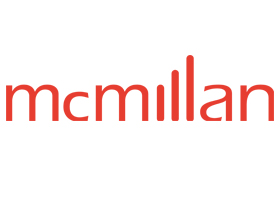


FSRA Releases Final Innovation Framework and Opens Testing Environment for Auto Insurance Innovations
FSRA Releases Final Innovation Framework and Opens Testing Environment for Auto Insurance Innovations
On January 24, 2022, the Financial Services Regulatory Authority of Ontario (“FSRA”) released their Final Innovation Framework (“Framework”) and proposed Test and Learn Environment (“TLE”) Guidance, after the creation of the Innovation Office in 2020 and the positive feedback received during the Innovation Framework consultation.
FSRA also announced that the first test environment is now open to the auto insurance sector.
The Framework outlines FSRA’s approach to working with regulated and non-regulated entities in the pursuit of sustainable innovative opportunities as a way to bolster the responsivity of the financial services to support the creation of accessible, affordable, and tailored products and services for consumers, and to ensure that Ontario’s financial services sector remains competitive with global markets.
The Framework outlines several guiding principles to ensure that innovative pursuits are aligned with FSRA’s broader responsibility as a regulator, including, for example, that:
- FSRA will facilitate responsible innovation in the regulated sectors without directing the substance of innovation.
- The Innovation Office will challenge established structures and closed mindsets that stifle innovation and will leverage existing regulatory tools to create meaningful impact and build trust over time.
- FSRA will lower barriers for new entrants to drive innovation and competition while supporting the market to evolve sustainably.
- FSRA’s innovation strategy and process will be adaptable to the diversity of its regulated sectors.
FSRA will undertake to uncover and implement innovative regulatory approaches through their “inside-out” and “outside-in” approaches to innovation. The “inside-out” approach reflects FSRA’s commitment to ensuring that available regulatory tools are being used to support innovators and that regulatory discretion is being used where appropriate and on an as-needed basis. This approach aims to create a fair landscape for incumbents and new entrants, as well as to incentivise financial services innovation for existing and new innovators.
The “outside-in” approach reflects FSRA’s commitment to supporting innovators as they pursue new financial services and products. An element of this approach is fostering a regulatory environment that encourages innovation and is committed to improving and adapting regulatory responses to reflect evolving market practices. FSRA is also working to establish Innovation Liaisons to ensure innovators have clear channels of communication with their Core Regulatory contacts and the Innovation Office in order to share their innovation opportunities with the regulator more easily. Together, the “inside-out” and “outside-in” innovation processes demonstrate a commitment from FSRA to be actively engaged in supporting innovators, with the ultimate goal of creating sustainable products and services for consumers.
Additionally, the Framework and related proposed TLE Guidance outline how FSRA will use TLEs to allow access to a relatively low-risk process for gauging market response to innovations and allow innovators to take advantage of data-driven design. TLEs will be available to validate and assess new non-capital market financial services products, services, or business models. FSRA will use this approach to gather information about how a particular innovation behaves in the real market, which will guide their regulatory response. The proposed TLE Guidance will remain open for stakeholder feedback throughout 2022.
The opportunity to participate in TLEs will be open to market participants who are in good standing with FSRA and other applicable regulators, or who otherwise agree to be subject to FRSA’s jurisdiction. If an innovator wishes to conduct a TLE, they can apply to FSRA with their potential “Innovation Opportunity” through an application form that will be made available on FSRA’s website. The application must include, among other requirements, an explanation of the issue the innovation is trying to address, the solution being proposed, and the desired outcome to be achieved through the testing.
The first test environment is now open to innovators in the auto insurance sector. The application form is available here. Note that FSRA retains the right to define the length of the testing period granted, up to a maximum of two years. Applicants who need additional time at the conclusion of the initial testing period may make a request a renewal, up to a maximum of two more years. However, FSRA may in its sole discretion shorten the initial or renewed testing period requested by the applicant.
The Framework and TLE Guidance reflect FSRA’s ongoing commitment to innovation in Ontario’s financial services sector. FSRA will continue to implement the Framework and TLE Guidance throughout 2022, a positive step forward for innovators in Ontario developing novel financial services solutions.
by Darcy Ammerman and Ricki-Lee Williams (Articling Student)
A Cautionary Note
The foregoing provides only an overview and does not constitute legal advice. Readers are cautioned against making any decisions based on this material alone. Rather, specific legal advice should be obtained.
© McMillan LLP 2022
Insights (5 Posts)View More
Ontario (Might get the) Right to Repair – An overview of Bill 187 the Right to Repair Consumer Electronic Products, Household Appliances, Wheelchairs, Motor Vehicles and Farming Heavy Equipment Act, 2024
Ontario considers new right to repair legislation for consumer products and motor vehicles.
More Than Meets the Eye: The Legal Implications of British Columbia’s Agreement to Recognize Aboriginal Title Over Haida Gwaii
An analysis of legal implications related to the BC Government's agreement with the Haida Nation to recognize Aboriginal title over Haida Gwaii.
Lessons Learned from the TTC’s Ransomware Attack
Lessons learned from the recent investigation by the Ontario IPC into the effectiveness of the TTC's cybersecurity measures and ransomware attack response
Don’t Get Caught by Canada’s Patent Novelty Grace-Period
The key difference between Canada and other jurisdictions like the United States when relying on the grace-period for inventor disclosures.
Shifting Gears – Canada to Consider New Motor Vehicle Equipment Regulations to Help Prevent Auto Theft
Transport Canada announces plan to update safety standards to combat auto theft.
Get updates delivered right to your inbox. You can unsubscribe at any time.






